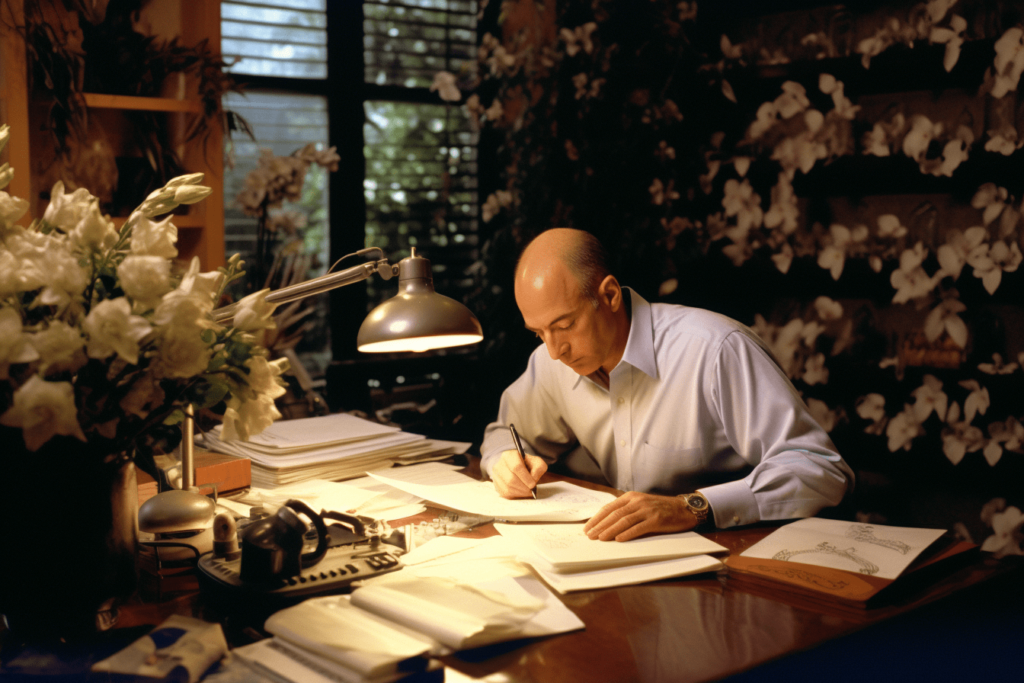TLDW (Too Long; Didn’t Watch): Sean Frank, a $200M/year e-commerce expert, shares his playbook on the My First Million podcast. Key takeaways: Start with services to build skills and cash flow, spot fast-emerging trends (e.g., no screen time, creatine), prioritize profitability from the first sale over lifetime value (LTV), and be ruthless with product expansion. His company, Ridge, grew from $5M to over $200M in six years by focusing on a simple product (wallets), leveraging Facebook ads, and expanding into categories like wedding bands—all without debt or outside funding.
E-commerce in 2025 is a battlefield, but Sean Frank, the mastermind behind Ridge—a company pulling in over $200 million annually—has cracked the code. In a recent My First Million podcast episode hosted by Sam Parr and Shaan Puri, Frank unpacked his journey from a 22-year-old agency hustler to a dominant force in direct-to-consumer (DTC) commerce. His insights offer a blueprint for anyone looking to thrive in the ever-shifting e-commerce landscape. Here’s what he revealed—and how you can apply it.
From Agency to Empire: The Ridge Story
Frank’s journey began not with a groundbreaking product but with a services gig. In 2012, as Facebook ads emerged, he learned the ropes at a mediocre ad agency. At 22, he saw an opportunity: “I could do this better.” With his CMO, Conor, he launched his own agency, snagging 10 clients—including Ridge, a fledgling wallet brand started by a father-son duo and their friend. By 2016, Ridge was doing $5 million in sales, but Frank saw untapped potential.
His agency took over everything—marketing, customer service, logistics—eventually merging with Ridge in 2018. From there, the brand skyrocketed: $5M to $10M, $15M, $18M, $30M, $50M, $100M, and now “multi-hundred million” in revenue. No debt. No venture capital. Just pure, profitable growth.
What fueled this? A simple product (a sleek, minimalist wallet), a massive total addressable market (TAM—$10 billion for men’s wallets), and a relentless focus on paid ads—especially Facebook. “We could always put another dollar into Facebook and it worked,” Frank said. While others chased complex innovations, Ridge doubled down on what worked.
The 2025 Playbook: How to Win
Frank’s success isn’t luck—it’s strategy. Here’s his advice for winning in e-commerce in 2025:
- Start with Services, Then Pivot to Products
Frank recommends cutting your teeth in services—think ad agencies, consulting, or freelance gigs. “You’ll make your first million delivering good value to people,” he says. It’s low-risk, permissionless, and builds skills and cash flow. Ridge grew out of his agency; so did brands like Brez (a weed-mushroom drink) and Holo Socks, both founded by ex-agency operators. Services let you test trends and markets before committing to inventory. - Spot Fast-Emerging Trends
Trends are your rocket fuel. Frank highlights two for 2025: no screen time (e.g., crocheting kits like The Woobles, which went from $10M to $150M in two years) and creatine (tied to fitness and wellness). Others include microplastic-free products and tactile toys. How do you find them? Look at your life for passion points, or—if you’re seasoned—follow TikTok’s “girlies” or LA’s trendsetting Erewhon crowd. “Reddit and Etsy are dead—AI slop,” Frank warns. Go where real humans signal what’s next. - Profit First, Forget LTV
Lifetime value (LTV) is a trap, Frank argues. “Most brands die waiting for LTV.” Ridge thrives by being profitable on the first purchase—crucial for one-off products like wallets. Contrast this with supplement brands banking on repeat buys; if the trend fades, they’re toast. In 2025, cash flow is king—don’t bet on future loyalty to save you. - Expand Ruthlessly
Don’t cling to brand purity. Ridge added wedding bands in 2022, hitting eight figures in year one. “Customers never think about you,” Frank says. Look at BIC—lighters, pens, razors—and now tattoo removal. Allbirds stagnated by staying rigid; Ridge grows by meeting customers where they are. Test new categories fast, cut what flops, and double down on winners. - Respect Your Customer
Frank’s team obsesses over “Ed,” the everyday dad who loves widgets, fishing, and the NFL. HexClad, a cookware brand Frank admires, spent years perfecting pans before scaling to $500M+. “Are we delivering value to Ed?” guides every move. In 2025, quality matters—arbitrage alone won’t cut it.
Case Studies: Who’s Crushing It?
- HexClad: Bootstrapped from county fairs to Super Bowl ads, now over $500M with Gordon Ramsay as an investor. Product-first excellence.
- The Woobles: A crocheting kit brand that rode the no-screen-time wave from $10M to $150M in two years—no capital raised.
- Brez: Ex-agency founders hit $4.6M monthly revenue in 21 months with a cannabis-mushroom drink, leveraging TikTok’s organic reach.
The Hard Truth: E-commerce Isn’t Easy
Frank admits e-commerce is “blue-collar work”—unsexy, physical, and trend-dependent. “It’s permissionless,” he says, unlike tech infrastructure gigs requiring credentials. But scaling means bigger POs, more management, and constant pivoting. Compare that to SaaS, where growth can feel effortless once the product clicks. Yet for Frank, the grind fits: “If I have to pack boxes, I’ll pack boxes.”
What’s Next for Frank?
Ridge could fetch $300M today, but Frank’s eyeing $500M–$600M by decade’s end, fueled by tech retail (Apple, Verizon) and new products like power banks. His long-term goal? Net $100M from a sale, then build a portfolio of trend-driven brands and services—a personal PE empire.
Takeaway for 2025
E-commerce rewards the adaptable. Start small with services, chase growing markets, prioritize profit, and expand fearlessly. As Frank puts it, “Strong beliefs, loosely held.” In a world of fading trends and brutal competition, that’s the mindset to win.
